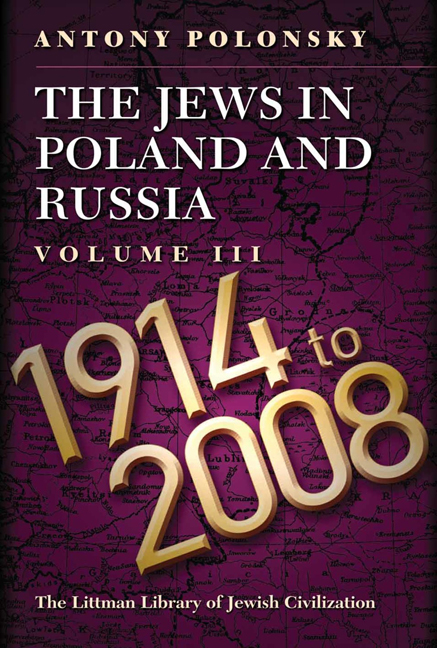Book contents
- Frontmatter
- Dedication
- Acknowledgements
- Contents
- List of Maps
- List of Tables
- Note on Transliteration
- Note on Place Names
- Maps
- General Introduction
- PART I FROM THE FIRST WORLD WAR TO THE SECOND
- PART II WAR AND GENOCIDE, 1939–1944
- PART III FROM THE END OF THE SECOND WORLD WAR TO THE COLLAPSE OF THE COMMUNIST SYSTEM
- EPILOGUE JEWS IN EASTERN EUROPE AND RUSSIA SINCE THE END OF COMMUNISM
- Conclusion
- Glossary
- Bibliography
- Index
18 - Jews in Russia, Ukraine, Belarus, and Lithuania since 1991
- Frontmatter
- Dedication
- Acknowledgements
- Contents
- List of Maps
- List of Tables
- Note on Transliteration
- Note on Place Names
- Maps
- General Introduction
- PART I FROM THE FIRST WORLD WAR TO THE SECOND
- PART II WAR AND GENOCIDE, 1939–1944
- PART III FROM THE END OF THE SECOND WORLD WAR TO THE COLLAPSE OF THE COMMUNIST SYSTEM
- EPILOGUE JEWS IN EASTERN EUROPE AND RUSSIA SINCE THE END OF COMMUNISM
- Conclusion
- Glossary
- Bibliography
- Index
Summary
From two components this identity originates:
You cannot extract one without damaging the other;
Either–or doesn't apply here.
Inclusiveness is the key—
We are Russians and Jews,
Both are conjoined in us,
All mixed together and inseparable …
MARINA TEMKINA, ‘A Comic with an Ethnic Theme’, 1994Yitshak was sitting on a park-bench and was staring without blinking at that country road, running not on earth but through the sky. Through the efforts of a weakening brain, similar to an old radio with exhausted batteries, he was tuning in to some long-gone waveband, attempting to give it its old resonance and clarity. He brought out of oblivion bleeding chunks of life in the hope of putting them together into something living, or, if not wholly alive, then at least pulsating, trembling, not yet moribund.
GRIGORY KANOVICH, The Park of Forgotten Jews, 1997THE JEWS IN THE FORMER SOVIET UNION: SOME COMMON FEATURES
IT IS VERY DIFFICULT to provide an accurate estimate of the number of Jews in the countries that have emerged from the break-up of the Soviet Union. The survey of world Jewish population conducted by the American Jewish Committee in 2005 adopts as its criterion for membership of a Jewish community outside Israel the concept of ‘core Jewish population’, which includes
all those who, when asked, identify themselves as Jews; or, if the respondent is a different person in the same household, are identified by him/her as Jews … Such a definition of a person as a Jew, reflecting subjective feelings, broadly overlaps but does not necessarily coincide with halakha (rabbinic law) or other normatively binding definitions. Inclusion does not depend on any measure of that person's Jewish commitment or behavior in terms or religiosity, beliefs, knowledge, communal affiliation or otherwise.
The survey also used the concept of the ‘enlarged Jewish population’, which is made up of the sum of ‘(a) the core Jewish population; (b) all other persons of Jewish parentage who—by core Jewish population criteria—are not Jewish currently (or at the time of investigation); and all of the respective further non-Jewish household members (spouses, children etc.)’. According to the survey, the estimated core Jewish population of the former USSR in 2005 was 379,800, of whom 20,300 lived in Asia. At least as many non-Jewish family members were part of the respective enlarged households.
- Type
- Chapter
- Information
- The Jews in Poland and RussiaVolume III: 1914 to 2008, pp. 765 - 808Publisher: Liverpool University PressPrint publication year: 2012

